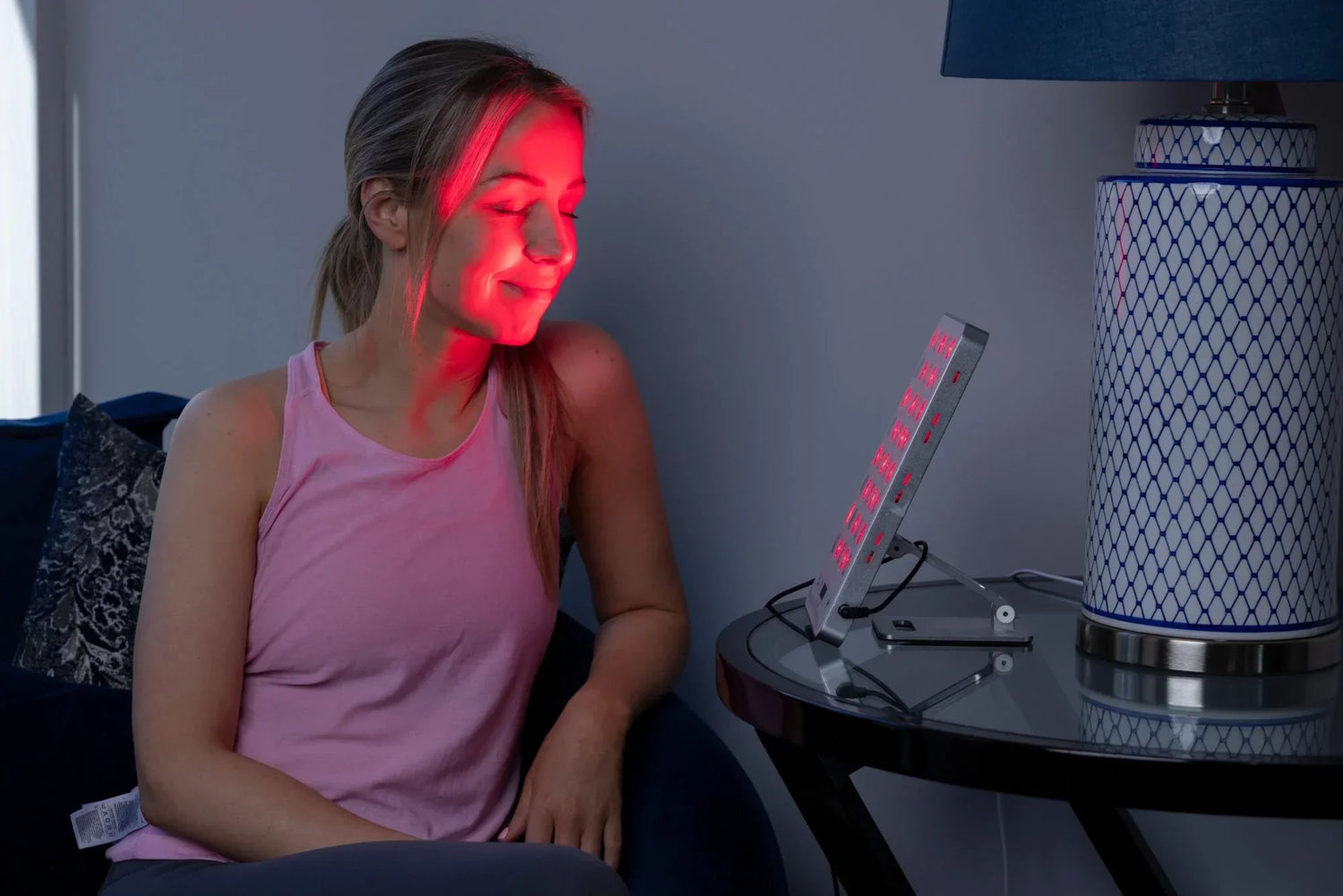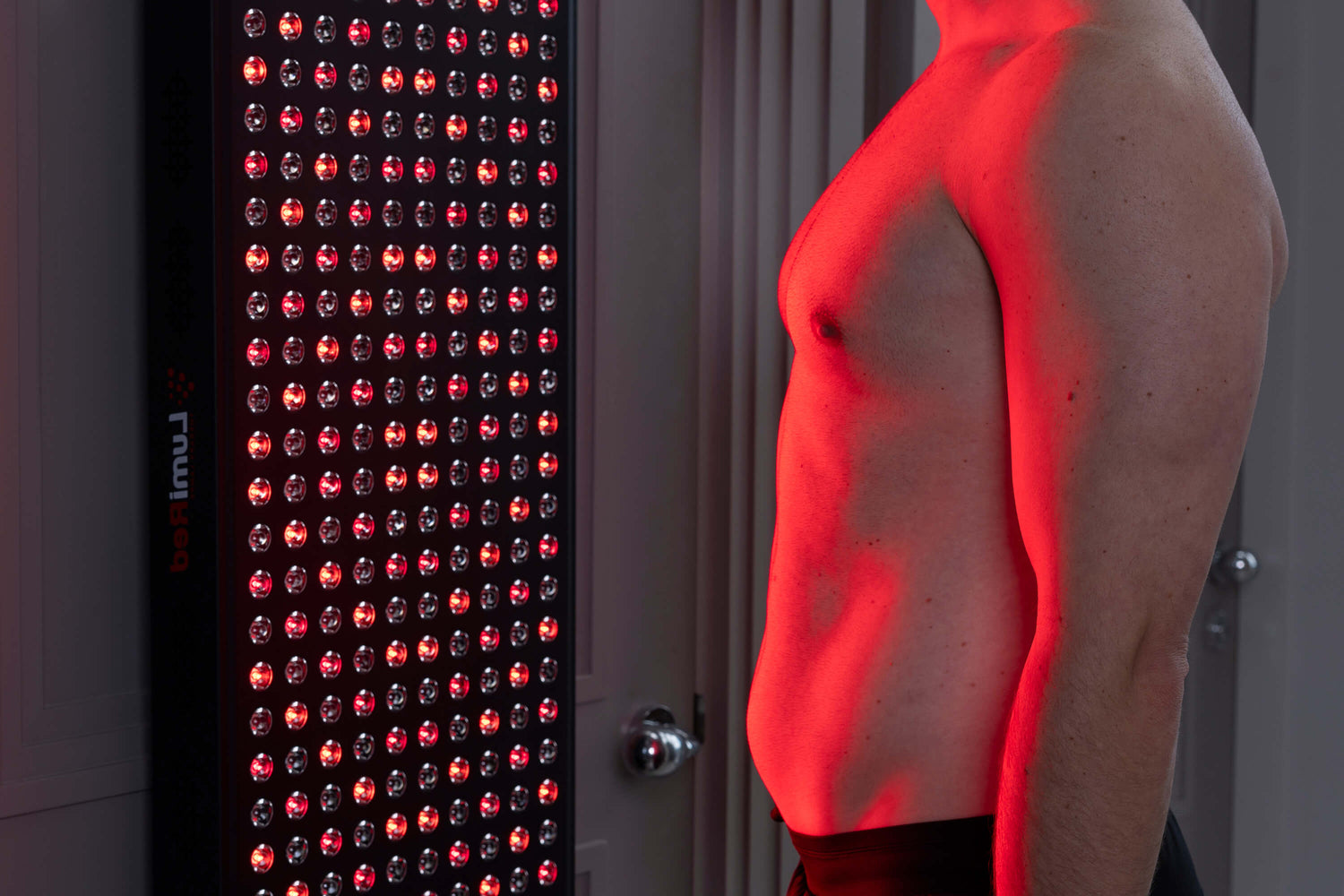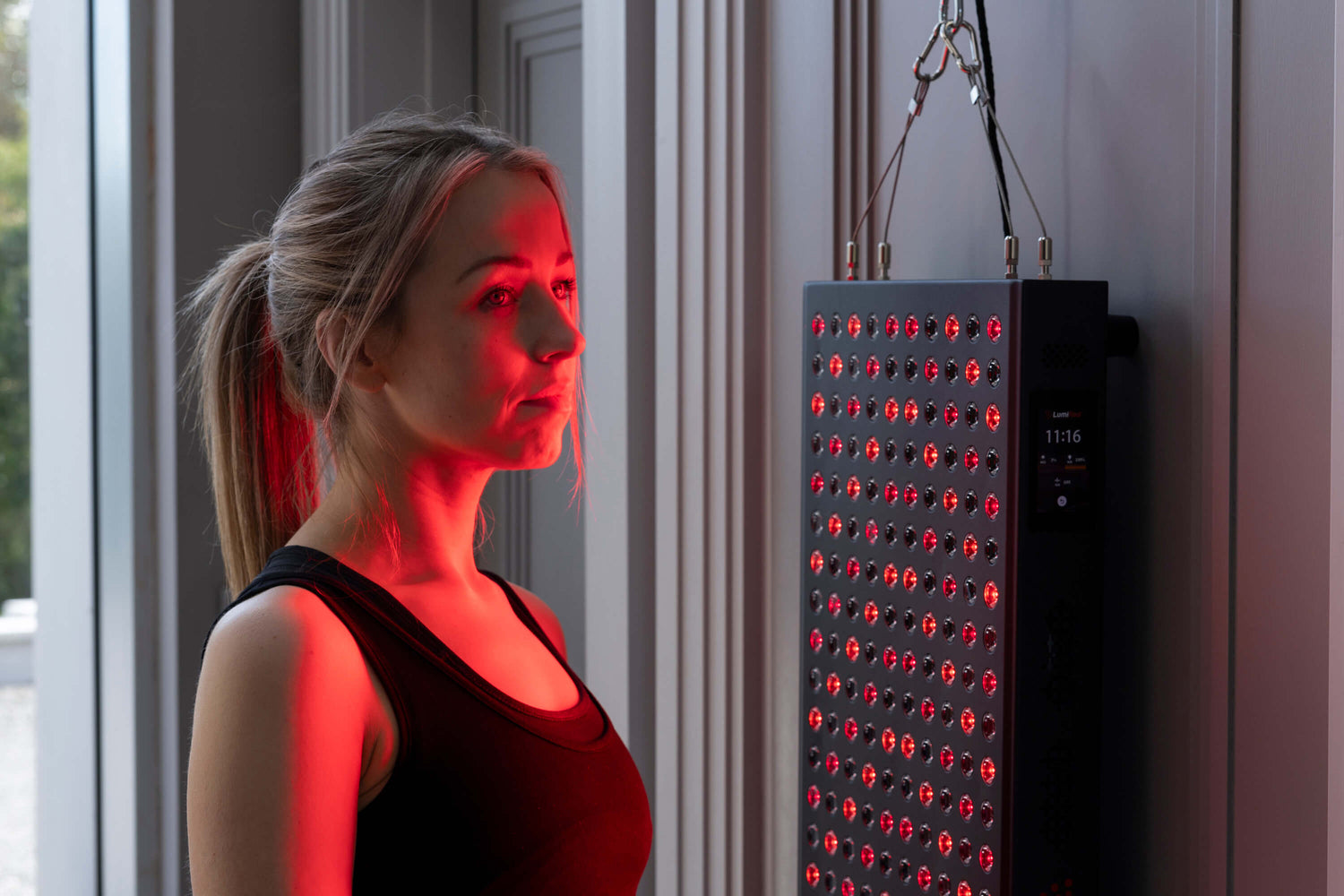Red light therapy has grown significantly in popularity in the fields of skincare, wellness, and pain management. This evidence-based, non-invasive treatment addresses skin health, speeds healing, and positively influences mood. But how do you best use your own red light therapy device to get the most from your home therapy?
This comprehensive guide will take you through the science of red light therapy (RLT), how to select the best device and how to use red light therapy.
Key Takeaways:
-
Using Your RLT Device Correctly is Crucial – Follow the appropriate distance time length while also ensuring the skin is exposed directly.
-
Targeted Treatments Have Yielded the Best Results – Each area (face, joints, and/or the full body) responds better with a specific red light therapy regimen.
-
Maintaining an Ongoing Routine is Important – Create a routine for yourself for the best and long-lasting outcomes.
The Science Behind RLT
The therapy stimulates biological processes within cells, which improves energy (adenosine triphosphate or ATP) and helps cells heal and regenerate more quickly. This helps in a variety of conditions, from reducing inflammation and helping wounds heal to producing collagen and even improving mood.
Research has shown that RLT can positively affect cellular behaviour, including:
1. Collagen Production: This is essential for maintaining skin elasticity and minimising the signs of ageing.
2. Improved Circulation: Enhanced blood flow can help reduce inflammation and facilitate healing.
3. Reduced Oxidative Stress: RLT can mitigate oxidative damage in cells, promoting overall cellular health.
These mechanisms explain why red light therapy is so effective for skin health, pain management, and mood enhancement.
How to Use Red Light Therapy at Home?
Using red light therapy at home is straightforward, but consistent and correct application is key to achieving the best results. Follow this step-by-step guide to maximise your experience:
1. Select the Appropriate Device
With so many red light therapy devices available, the choice can be overwhelming. There are handheld devices, large panels, masks, and big beds. The device you select must have reached safety standards and be within the therapeutic wavelength range (600-900 nm) when making a decision.
2. Clean Your Skin
Before starting a red light therapy treatment, it is important to cleanse the skin of any makeup, oils, or dirt. Cleansing the skin will add to the red light's ability to penetrate the skin for the best results because anything on the skin will block or reduce therapy effectiveness.
3. Check Your Device Placement
The distance of the device from your skin can impact your outcomes: as a general rule, you should hold it 6 to 12 inches from the skin. A greater distance still lets the skin absorb while allowing you to maintain heat. Also, ensure your device is stable and secure, as you do not want to have to adjust the device while having a treatment in progress.
4. Treatment Length
Consistency is key in receiving results from red light therapy. Sessions are typically 10 to 20 minutes in length, depending on the body area being treated, as well as the device in use. For most users, benefits can be expected after 4 to 8 weeks of treatment.
5. Think About Clothing
Red light therapy works best when it is in direct contact with your skin. If you want the most benefits possible, you should remove any clothing or fabric between the device and your skin. If you are targeting a body area, you should have the body area in the light during treatment.
6. Keep Working at It
Experts recommend 3 to 5 treatment sessions per week for optimum results of red light therapy. Continual treatment is necessary to support and build upon some of the potential benefits of red light therapy over time. If you miss a treatment every once in a while, it’s no big deal. Just resume your normal schedule afterwards.
7. Hydrate and Moisturize
After-care is important for maximised results. After your treatment, apply a quality moisturiser to your skin to hydrate it. This routine will enhance your skin through rejuvenation. Hydrating your bodily systems with water is much more aggressive in supporting your body
Benefits of Red Light Therapy
The following are the benefits of red light therapy:
1. Skin Health & Anti-Aging
Red light therapy is growing into the leader in anti-ageing and is formulated just to treat wrinkles, fine lines, and acne. It stimulates collagen, which helps skin health while creating breakouts and creating more youthful, tighter-looking skin.
2. Pain Relief & Muscle Recovery
Red light therapy has gained attraction with athletes and people living with chronic pain. It works to reduce inflammation and aids in muscle recovery while also impacting pain stemming from arthritis or other causes. It is an excellent addition to any rehab routine.
3. Enhanced Sleep and Mood
Research suggests that red light therapy can help regulate melatonin production, thereby improving sleep cycles. Adequate sleep is critical to good health, and red light therapy might serve as an ally for improving sleep and mood by promoting relaxation and reducing stress.
4. Healing & Scar Reduction
Research has indicated that red light therapy stimulates wounds to heal more quickly by stimulating new cell development and enhanced circulation. This might be very useful in decreasing scars while promoting healing several days post-surgery or injury.

Identifying the Right Area for Treatment
Different treatment areas may require varied intensities of red light therapy for optimal results. Below are a few suggestions:
1. Face
When wearing a mask, do red light therapy for 10-15 minutes. When using red light therapy on the face, use a uniform application and avoid over-treating the area to avoid causing any irritation. You can also enhance benefits by applying facial serums and/or moisturisers post-treatment.
2. Joints & Muscles
For larger muscle groups or joint pain, utilising large panels is ideal. You can treat each area for about 15-20 minutes. For everyone else suffering from discomfort related to physical exercise or chronic pain, often times frequent treatments will promote recovery.
3. Red Light Therapy at Home for Full Body
For systemic health benefits, a red light therapy bed or larger panel is ideal. This will give the body an even treatment to even areas of the body while easily fitting into your routine.
How to Find the Best Device for You?
Selecting a red light therapy device can be overwhelming - you will want to consider:
1. Wavelength: Devices that emit light in the therapeutic range of 600-900 nm, where deeper tissue penetration is facilitated, are preferred for therapy.
2. Intensity and Coverage: Select a device that suits your purpose. Larger panels are used for a full-body treatment, while handheld devices are used for a post-endothelial treatment.
3. Quality & Reviews: These factors should be examined by looking up safety certifications and customer reviews prior to a purchase. If recommended by professionals, this can help with choosing a product that is effective and has been proven reliable.
Conclusion
Red light therapy presents an exciting holistic approach to enhancing skincare, alleviating pain, and promoting overall wellness. By following the recommended procedures, selecting a quality device, and maintaining consistency in your sessions, you can experience significant improvements in various aspects of your health.
Experience the Power of Red Light Therapy with LumiRed
Discover high-quality, science-backed devices designed to rejuvenate your skin, relieve pain, and boost wellness—all from the comfort of your home. Shop LumiRed today and take the first step toward glowing skin and better health!




